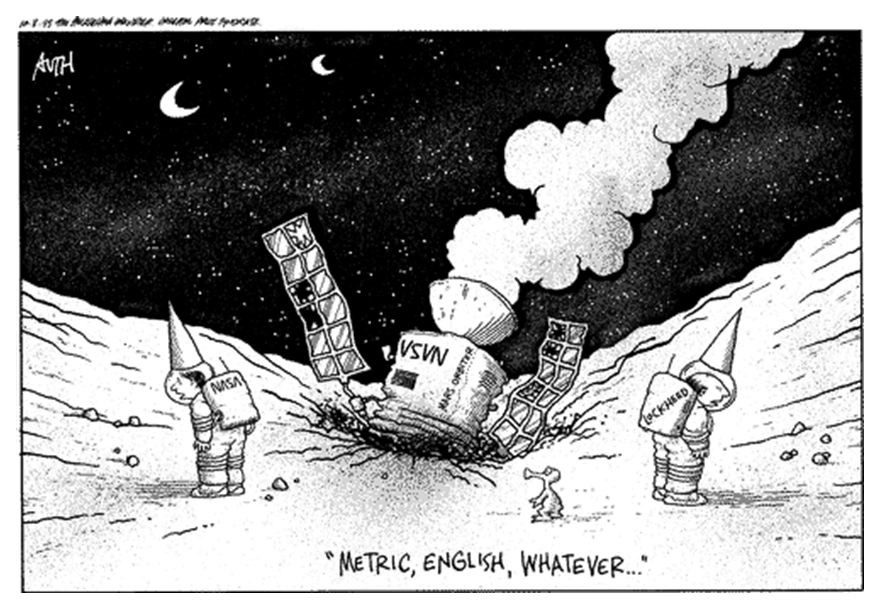Legend has it that in 1517, Spanish Conquistadors exploring the Yucatán Peninsula asked the indigenous Mayan people the name of the region.

The Mayans responded, Tectetán, which sounded like Yucatán to the Europeans. But it actually meant, “I don’t understand you.”
That’s why today you can visit the I don’t Understand You Peninsula, one of Mexico’s safest, if not misunderstood, states.
The explorers assumed they were communicating clearly with their constituents, a miscommunication indelibly inked on the world stage.
According to the new State of Business Communication Report by The Harris Poll and Grammarly, miscommunication is costing American businesses $1.2 trillion annually. There are three assumptions about communications that are at the root of the “I don’t understand you” problem.
Assumption #1: Communication comes naturally to you (it doesn’t).
Assumption #2: Communication is already working for you (it isn’t).
Assumption #3: Communication is not a significant source of risk for leaked costs and adverse business impacts (it is).
Per the findings, 82% of business leaders are confident in communicating with their direct reports, but only 68% of knowledge workers agree they receive effective communication from their direct managers.
Which of these above assumptions do you believe about your communication skills? Do you see these erroneous beliefs playing out with your colleagues? When was the last time you felt misunderstood? What are these assumptions costing you, your team and your business? Let’s take a look.
Communication Does NOT Come Naturally to Most People
In 1976, recently elected President Jimmy Carter was visiting a college in Japan. He decided to start his speech with a joke to break the ice. Afterward, he said it wasn’t a particularly funny joke but it was short. When he told it to the gathering he noticed that his translator seemed to have shortened the joke even more. The crowd erupted with laughter.
When President Carter pressed the translator for what he actually said to the audience, the translator confessed, “I couldn’t translate your joke properly so I told them that the president is telling a joke and please laugh now.”
Is what you’re saying being translated properly by those sitting across from you? Are you or your leadership confusing? Do you and your colleagues obfuscate with big words and complex analogies?
You can start making your communications more naturally compelling by considering the first three skills at the top of the 23 Things Effective Communicators Do at Work and Home list. Effective communicators:
- Listen: You get paid for what goes on between your ears, so please use them.
- Relate to Others: Place your audience at the center of your story and share your message from their point of view (POV).
- Simplify the Complex: No one follows a leader who is confusing.
How to Evolve From an Intuitive to an Intentional Business Storyteller
The first step to overcoming the fallacy that communication comes naturally to you is to evolve from an intuitive storyteller to an intentional one using proven narrative frameworks.
 We start our communication training with the foundational narrative framework of the ABT (And, But, Therefore), which checks off the first-three boxes of listening, relating and simplifying.
We start our communication training with the foundational narrative framework of the ABT (And, But, Therefore), which checks off the first-three boxes of listening, relating and simplifying.
The ABT is a marvelous listening tool because it helps you truly understand where your audience is coming from, what they want AND why it’s important to them. We call that the AND Statement of Agreement. It helps you validate their POV and build common ground to demonstrate how you can relate to their wants and needs.
The BUT Statement of Contradiction – identifying the problem you will help them solve – triggers their emotion, deepening your connection with them.
The THEREFORE Statement of Consequence resolves their problem with your solution, taking a complex challenge and simply communicating it as clearly as possible.
In September, 2021, I was training a sales leadership team at Home Depot about the ABT. The sponsor of the program said after his team took my short online course that “We’ve got this ABT thing down, what’s next?”
I said I’m afraid you don’t. We spent the next 90-minutes in a virtual workshop training his people live. He called directly after our first session and said, “Wow, you’re right. The ABT is trickier than it looks.”
He assumed they were already better communicators but learned that to make complex communications simple and understood from your audience’s perspective, it takes practice.
Is Communication Really Working for You?
Here’s a fun little test to try to see if your communication is working for you. Get 10 people and ask them to identify a song you are going to not sing or play but tap out with your fingers. An easy one is the Happy Birthday Song. Tap it out and see how many people identify the right song.
This is a test that illustrates the Illusion of Transparency phenomenon, which is a tendency for us to overestimate how well we communicate what’s really going on in our heads.
Stanford Ph.D. candidate, Elizabeth Newton, invented the song tapping experiment to demonstrate the illusion of transparency bias. Subjects estimated that the correct song would be chosen 50 percent of the time but only three percent got it right. We hear it in our heads. It is obvious to us, but your subjects hear something completely different.
 Heidi Grant Halvorson, author of No One Understands You and What to Do About It, says that you think you are crystal clear on your beliefs, needs and motivations but that most of the time your audience completely misinterprets your communication.
Heidi Grant Halvorson, author of No One Understands You and What to Do About It, says that you think you are crystal clear on your beliefs, needs and motivations but that most of the time your audience completely misinterprets your communication.
Adding to the misunderstanding is your colleague’s own experiences, emotions, and biases that cloud their perception. Halvorson suggests that everyone has an agenda when they interact with another person. That agenda is usually trying to determine one of three pieces of information about the perceived:
- Is this person trustworthy?
- Is this person useful to me?
- Does this person threaten my self-esteem?
A study from 1998 called Perceived Versus Actual Transparency of Goals in Negotiations demonstrated that more than half of the subjects felt they were clearly communicating their goals when only 26 percent of the subjects correctly guessed their partner’s goals.
“There’s a big gap between how other people see us and how we see ourselves,” according to Halvorson’s work. This gap illustrates that your current communication, unless you are clearly and succinctly articulating your position and sending the proper non-verbal cues, is probably not working for you as you believe.
What is Miscommunication Costing You?
In September of 1999, NASA engineers were pumped for the arrival of the Mars Climate Orbiter to Mars after a 10-month journey.
But upon entry into the Mars atmosphere, the $225 million Orbiter exploded into fiery fragments because engineers assumed they used the right units, i.e., the metric units!
It turns out that the problem was in the software controlling the Orbiter’s thrusters. The software calculated the force that the thrusters needed to exert in pounds of force. A second piece of code that read this data assumed it was in the metric unit—“newtons per square meter”.
During the design phase, the propulsion engineers at Lockheed Martin in Colorado wrote the software controlling the thrusters to express force in pounds. But it was standard practice to convert to metric units for space missions.
Engineers at NASA’s Jet Propulsion Lab assumed the conversion had been made.
This communication blunder with the navigation system pushed the spacecraft dangerously close to the planet’s atmosphere where it presumably disintegrated.
You may not have $225 million dollar spaceships on the line, but what is miscommunication costing you? What are the relevant business impacts?
Per the study, 74% of business leaders say, “My company underestimates the cost of poor communication” and that 76% say, “My company undervalues the impact of strong communication” – which hints that the cost is even higher than we might think.
Stop Winging it and Start Winning with Your Communication
During the last of three virtual sessions I hosted for Home Depot, one of their sales leaders asked me, “What is the shortest ABT you’ve ever used?”
“That’s easy,” I said.
You communicate AND care, BUT bore. THEREFORE, tell a story.
These 10 words are framed using the three forces of story: Agreement, Contradiction and Consequence. Our primal, cause-and-effect, pattern-seeking limbic brain loves this setup/problem/resolution structure to all of your messaging.
Learn the ABT and teach it to your team. You will no longer be under the misguided belief that communications come naturally to you, are already working for you and are contributing significantly to your bottom line.
You will actually put communications to work for you.
Download the report here: Grammarly_2022_The_State_of_Business_Communication












at 6:05 am
[…] if we tell the right story. The problem is that the salespeople don’t know the story and are not natural at using storytelling in sales. You have to teach them to do it, and you need a framework they can […]